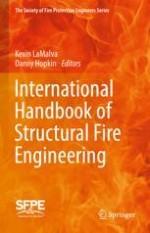2021 | OriginalPaper | Buchkapitel
2. The Fire-Resistive Principle
verfasst von : Kevin LaMalva, John Gales, Anthony Abu, Luke Bisby
Erschienen in: International Handbook of Structural Fire Engineering
Aktivieren Sie unsere intelligente Suche, um passende Fachinhalte oder Patente zu finden.
Wählen Sie Textabschnitte aus um mit Künstlicher Intelligenz passenden Patente zu finden. powered by
Markieren Sie Textabschnitte, um KI-gestützt weitere passende Inhalte zu finden. powered by
